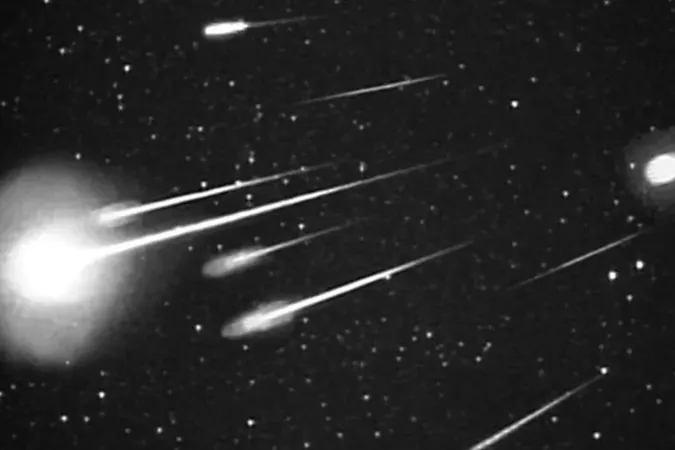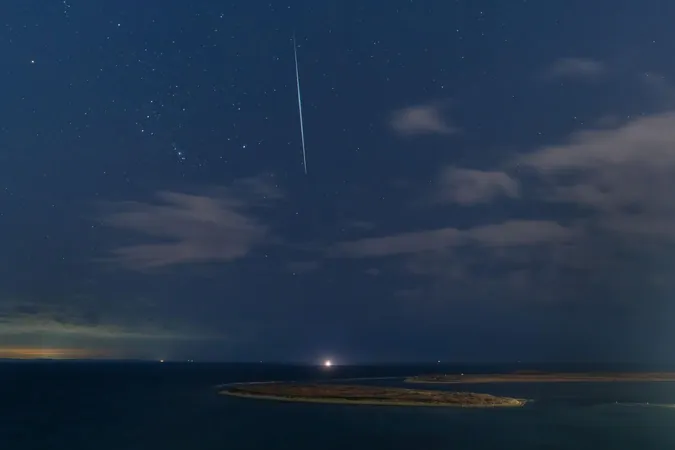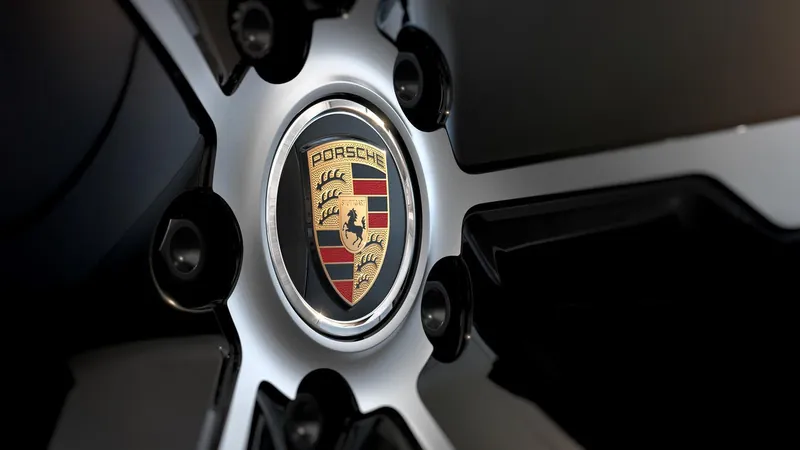
Your Ultimate Guide to the Leonids: Catch November's Spectacular Meteor Show!
2024-11-03
Author: William
Your Ultimate Guide to the Leonids: Catch November's Spectacular Meteor Show!
Get ready, stargazers! This November, our skies will light up with one of the most dazzling meteor showers of the year—the Leonids! Known for their vibrant and brilliant displays, these meteors are fragments of a comet that will grace our atmosphere and captivate skywatchers worldwide.
When to Watch the Leonids
This year, the Leonids will be visible from November 3 to December 2, peaking on November 18 around 1 a.m. ET. The best moments to catch the action will be on the night of November 17 into the dawn of November 18. So, gather your friends and prepare for an astronomical adventure!
Tips for Optimal Viewing
To maximize your viewing experience, it’s advisable to start looking up after midnight, with the prime viewing hours just before sunrise. You don’t need to face a specific direction since the Leonids can be observed all over the sky. Interestingly, it’s often suggested to avoid looking directly at the radiant point—the constellation Leo—to fully appreciate the long, bright trails of these meteors.
Equipment Needed
No need for fancy equipment! A telescope or binoculars won’t enhance your view of the Leonids. The key to a successful observing session is finding the darkest spot available. If you live in urban areas, consider heading to a rooftop or a local park away from city lights.
Moonlight and Viewing Challenges
This year’s meteor shower will face stiff competition from the bright moonlight, as the full moon will reach peak illumination on November 15, just a few days before the shower peaks. The waning gibbous moon might make spotting the meteors a bit tricky, but don't let that discourage you!
What to Expect: Fireballs and Speeds
The Leonids are famous for their extraordinary fireballs and visually stunning, colorful meteors. Unlike regular meteors, fireballs originate from larger chunks of debris and can create spectacular explosions of light, lasting longer than a typical meteor streak. With speeds clocking in at an impressive 44 miles per second (71 kilometers per second), the Leonids are among the fastest meteor showers we can observe.
The Science Behind Meteor Showers
So, what causes these mesmerizing celestial events? Meteor showers, including the Leonids, result from the Earth passing through trails of dust and debris left by comets and asteroids. When a comet like 55P/Tempel-Tuttle approaches the sun, its icy core sheds material, creating a tail. Each year, as Earth’s orbit aligns perfectly, we cross paths with this debris, and when particles enter our atmosphere, they disintegrate in a brilliant display of light.
The Comet That Sparks the Leonids
The Leonids specifically come from Comet 55P/Tempel-Tuttle, which completes an orbit around the sun every 33 years. Discovered in the mid-1800s by Ernst Tempel and Horace Tuttle, this comet measures about 2.24 miles (3.6 kilometers) across. Remarkably, every 33 years, when our planet intersects the comet’s debris trail during its closest approach to the Sun, we are treated to an breathtaking Leonids storm that can produce hundreds of meteors per hour.
Conclusion: Prepare for the Beauty of the Leonids
Don’t miss out on this celestial spectacle! Mark your calendars, find a dark spot, and prepare to be awestruck by the beauty of the Leonids this November. Who knows, you might even catch a spectacular fireball lighting up the night sky!









 Brasil (PT)
Brasil (PT)
 Canada (EN)
Canada (EN)
 Chile (ES)
Chile (ES)
 España (ES)
España (ES)
 France (FR)
France (FR)
 Hong Kong (EN)
Hong Kong (EN)
 Italia (IT)
Italia (IT)
 日本 (JA)
日本 (JA)
 Magyarország (HU)
Magyarország (HU)
 Norge (NO)
Norge (NO)
 Polska (PL)
Polska (PL)
 Schweiz (DE)
Schweiz (DE)
 Singapore (EN)
Singapore (EN)
 Sverige (SV)
Sverige (SV)
 Suomi (FI)
Suomi (FI)
 Türkiye (TR)
Türkiye (TR)